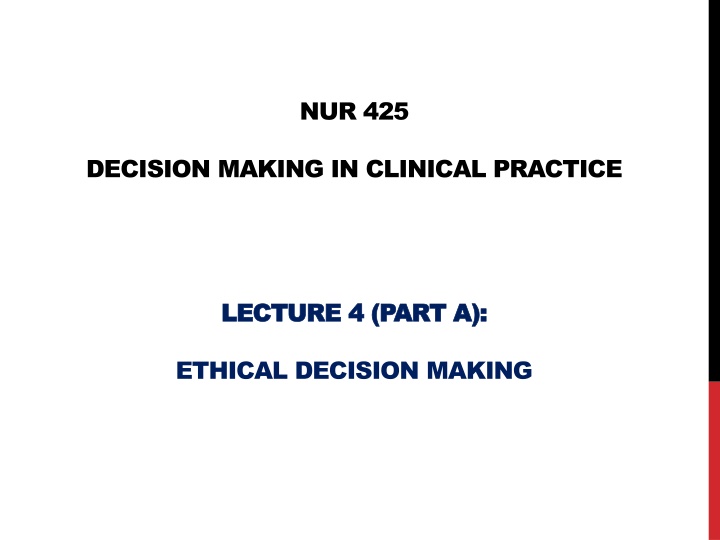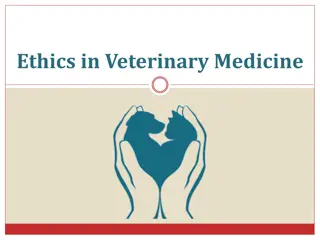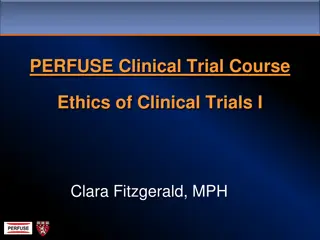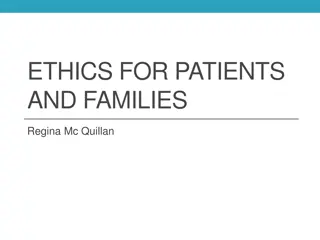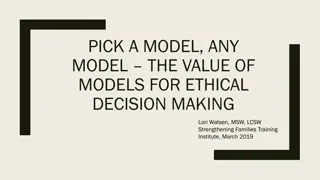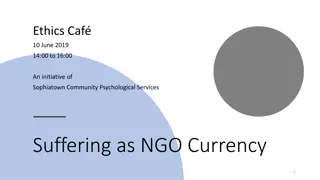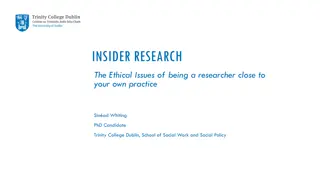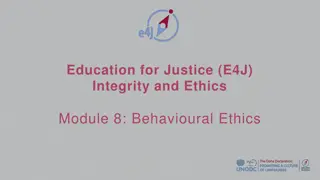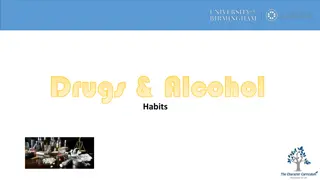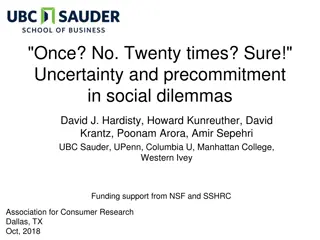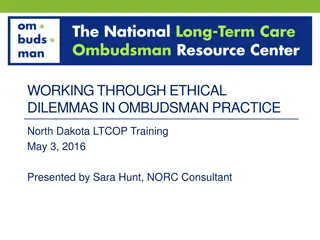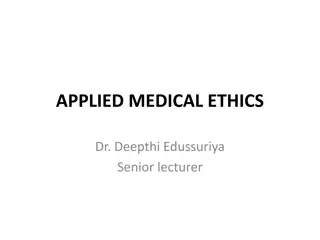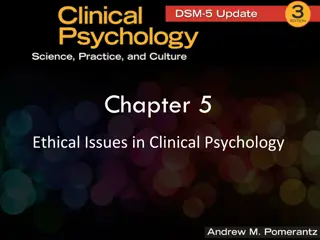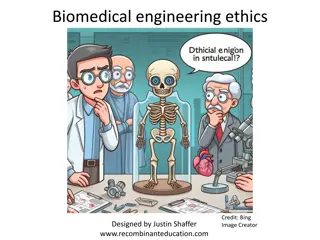Ethical Decision Making in Clinical Practice: Understanding Dilemmas and Solutions
An examination of ethical decision making in nursing, focusing on defining ethical dilemmas, addressing moral distress, and exploring the purpose of nursing ethics. The importance of aligning personal and professional values, ethical principles, and laws in resolving ethical dilemmas is discussed, along with a model for ethical decision-making. Nurses face challenges when resources are limited, and patients' autonomy is compromised, leading to moral stress. The model provides steps for analyzing and resolving ethical dilemmas, emphasizing the need to clarify values and consider alternative actions.
Download Presentation

Please find below an Image/Link to download the presentation.
The content on the website is provided AS IS for your information and personal use only. It may not be sold, licensed, or shared on other websites without obtaining consent from the author.If you encounter any issues during the download, it is possible that the publisher has removed the file from their server.
You are allowed to download the files provided on this website for personal or commercial use, subject to the condition that they are used lawfully. All files are the property of their respective owners.
The content on the website is provided AS IS for your information and personal use only. It may not be sold, licensed, or shared on other websites without obtaining consent from the author.
E N D
Presentation Transcript
NUR 425 DECISION MAKING IN CLINICAL PRACTICE LECTURE 4 (PART A): LECTURE 4 (PART A): ETHICAL DECISION MAKING
Ethical dilemma is defined as a problem involving a choice between equally desirable or equally unsatisfactory alternatives to the different or competitive assignment of priorities and responsibilities, or to a problem without a satisfactory solution (George & Grypdonck, 2002). Moral distress is defined as a psychological disequilibrium and negative feeling state experienced when a person makes a moral decision but does not follow through by performing the moral behavior indicated by that decision (Wilkinson, 1988, p. 16) (Wolf & Zuzelo, 2006)
Situations when ethical dilemma occurs: Nurses encountered ethical dilemmas when resources were limited, such as during the nursing shortage. They experienced moral stress in situations in which they had no control and patients lacked autonomy. External factors prevented nurses from doing what was best for patients. (Wolf & Zuzelo, 2006)
Purpose of nursing ethics To inspire questions and examine what would be the ethically right action in health care situations demanding a choice between at least two undesirable alternatives. Ethics deals with the construction and validation of criteria for judging a person s behavior. (Toren & Wagner, 2010)
Ethical decision-making model: a tool for the analysis and resolution of dilemmas Steps and criteria that can be used to analyze and resolve any ethical dilemma 1. 2. Define the ethical dilemma; Clarify the personal and professional values, ethical principles and laws involved; Identify the alternatives for action; Choose an action; Initiate discussion about unresolved issues; Generalize the solution to other similar cases. 3. 4. 5. 6. (Toren & Wagner, 2010)
1. Define the ethical dilemma In order to identify the contradictory values, to recognize the key components of a dilemma situation, the dilemma must be defined. This definition is sometimes confused with summarizing the story. Questions need to be raised about the meaning of the situation to all the participants and how the behavior of the nurse and the decision of the manager will affect them. (Toren & Wagner, 2010)
2. Clarify the personal and professional values, ethical principles and laws involved Personal values are based on what you value as important in the dilemma situation: for example, keeping a promise , doing no harm , maintaining professional integrity , etc. Professional values are based on nursing codes of ethics and on the values, principles and responsibilities that are relevant to the dilemma situation. Country laws and regulations are related to health care systems, patients rights etc. (Toren & Wagner, 2010)
3. Identify alternatives for action All possible actions must be identified. Looking only for the most conventional or routine action must be avoided. 4. Choose an action Choose the best option for action from the alternatives identified in the previous stage. 5. Initiate discussion about unresolved issues Discuss and evaluate the process of the action, including what worked, and what did not work, for determining recommendations and future actions. 6. Generalize the solution to other similar cases Formulate policy guidelines for similar cases. (Toren & Wagner, 2010)
